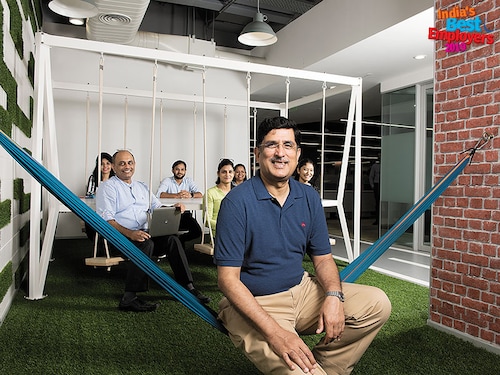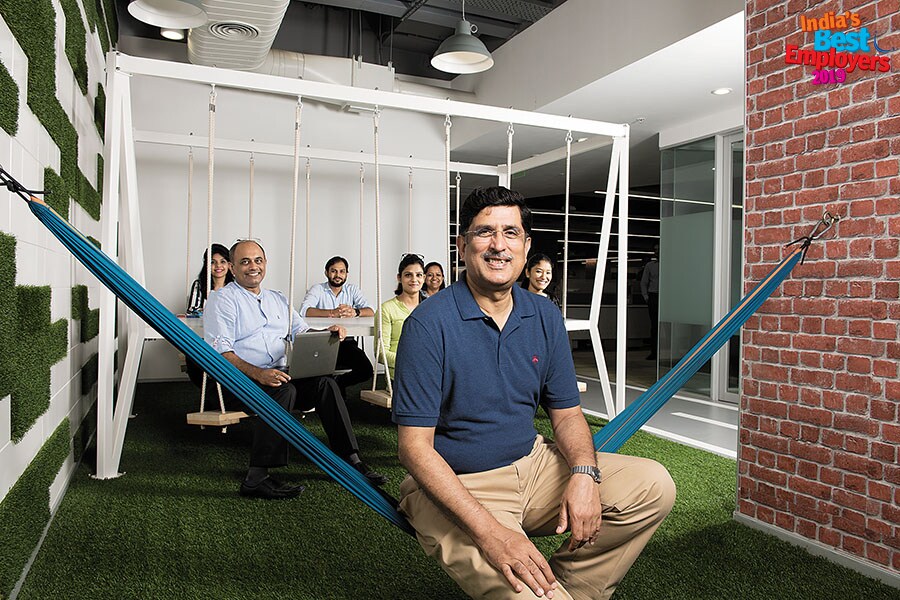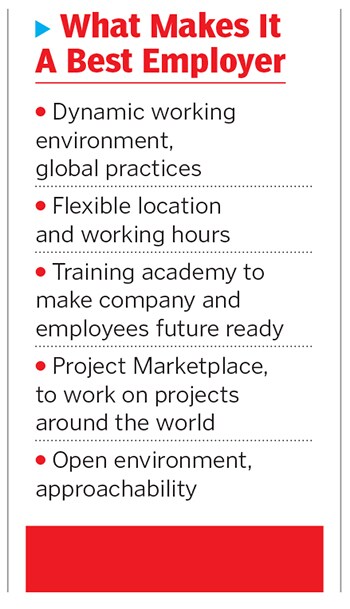Tata Communications: The millennial whisperers
Tata Communications has been helping employees build and use skills enabling better and improved outcomes


 Aadesh Goyal, CHRO at Tata Communications, feels the output is much better with less authority
Aadesh Goyal, CHRO at Tata Communications, feels the output is much better with less authority
Image: Amit Verma[br]About two and a half years ago, Tata Communications created a Tata Communications Academy for learning through digital means. Before that, about 85 to 90 percent of their training was delivered in the classroom and the rest through digital medium. Today, the ratio is reversed, and the number of training dates per employee has nearly tripled. The learning is also personalised, using artificial intelligence (AI) and machine learning, helping employees narrow down on what they need or find useful.
For the global provider of information and communication technology, keeping pace with rapidly changing technology is key, as is making employees future ready. “We have identified areas of expertise that we want to develop and we encourage people to learn,” says Aadesh Goyal, CHRO at Tata Communications, adding that they have also started a certification process.
Last year, he says, they set a target of 10,000 employees and 2,000 certifications. Since they had done 500 certifications the year before that, they thought 4x would be a good target. But that target was achieved in seven months, with 4,200 certifications in the whole year.
“If you create the right environment, you create the right employee experience, and empower people to do whatever they want rather than trying to control it. The output is much better with less authority. And that’s what we are trying to do,” he says.
While learning is important, employees might not get to practice what they have learnt. Or they might have a skill, or aspiration, to do something else. Project Marketplace lets any manager around the world put out any project they want done—for which they might not have resources or expertise or budget—and allows any volunteer to do that project, either because they have that expertise or want to sharpen it.“We have 25 to 30 percent of our employees using it, and have done about 150 projects,” says Goyal.
They are now working on making more projects available since the demand is high. “Young knowledge workers will do anything to learn and help others and we wanted to leverage that,” he says. “Nothing can be more exciting for a company than a spirit like that.”
The spirit of the company also lies in its dynamic work environment, and a unique mix of global practices. “We provide a platform where they can try out new things, learn from each other and impact the diverse cultures,” says Srinivasan CR, chief digital officer at Tata Communications. Providing clarity of purpose, transparency and encouragement are high on the list to make it a great place to work. “Make it exciting for them, give them challenges that drive them to do more than what they would imagine they can do,” he says.
More than half the employees are millennials, and nearly 70 percent of new hires each year are millennials. To attract and retain them, the company provides an environment where they can connect directly with leaders, ask questions and understand the company’s vision. “The younger talent like doing newer things, innovate, burn the midnight oil, keep their own work times. We have been able to give them all of that, and start programmes that help them go through life events and continue to take on challenges,” says Srinivasan.
“There is no policing, or even swipe cards. It’s about ownership and feeling responsible,” says Kamal Karanth, co-founder of specialist staffing company Xpheno. “There is a culture of responsibility, without the need to micro manage. Qualitative aspects such as reaching out and helping in times of need for work-related issues are highly valued and visible on the floor. Completing assignments in or ahead of time through these collaborations is what the system takes pride in and creates positive associations and vibes.”
The company also uses AI in talent acquisition to make better skill matches, while the Internal Job Postings programme means any employee can build their career by looking for a new job opening in the company. “Through it you can go to a different function, a different role, a different location or a country, and you can also move to a higher level, get a higher salary,” says Goyal, who also likes to meet as many people as possible in a year. “I typically land up meeting about 1,200 to 1,500 people every year, either as individuals or in small groups of 10 to 15 people. We create an environment for you to learn what is important for the employees, what’s working for them, what’s not working for them and you get lots of inputs through which you can then create the changes that are needed.”
First Published: Aug 13, 2019, 12:01
Subscribe Now